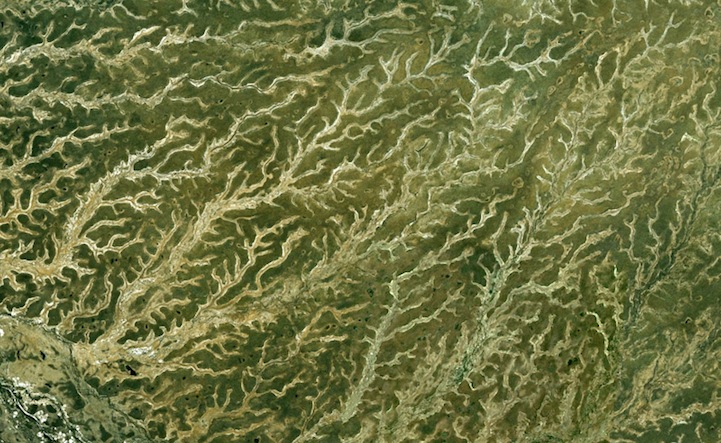
If you're unfamiliar with Google Earth, it's an application, similar to Google Maps, that allows one to view the world from the comfort of one's own home. You get to see some amazing satellite images of this planet of ours that's filled with a plenitude of colors and textures. A Research Associate Professor at the University of Western Australia named Paul Bourke took a liking to this handy app and started compiling an intriguing collection of images, acquired through Google Earth, of the many patterns that appear across the globe.
Bourke's ongoing Google Earth Fractals series, which began in October 2010, showcases the recurring veiny landscape motif and encourages its followers to submit their own findings in the form of a KMZ file. Each image on the project's web page is accompanied by a KMZ file which allows anyone to pinpoint the spot on their own Google Earth viewer, giving them the opportunity to explore these exceptional landscapes with awe-inspiring organic design.
The ridges and waterways in each aerial shot adds to the spectacular texture of each landscape. It's almost unbelievable that these naturally curving branches of paths exist in such extraordinarily beautiful patterns. The fact that it's a distanced view of the lands we walk on makes it that much more incredible and breathtaking. It really shouldn't come as such of a surprise, though, since it is a view of organically produced land. Many of the images bear a remarkable resemblance to textures and patterns found in a simple leaf, if one were to zoom in. Alternatively, we're looking at our vast world, zoomed out.
Top photo: Egypt

Malaysia

Greenland

Spain

Australia

Alaska

Spain

United States of America

Algeria

Saudi Arabia

Mexico

Spain

Canada

Russia
Paul Bourke website
via [PetaPixel]






















































































